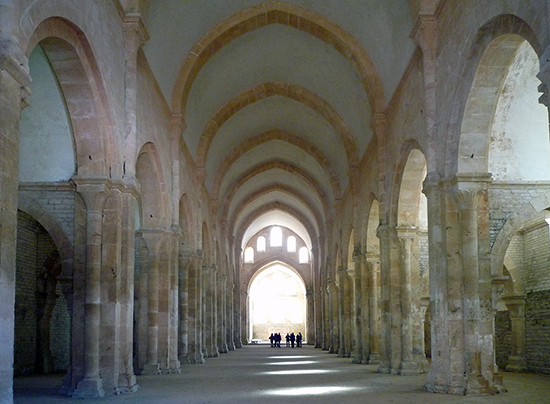The Rules
Essentially, the Cistercians felt the Benedictine monks had become too worldly and were no longer staying true to the Rules of Saint Benedict of Nursia. The Cistercians thought that the amount of time being devoted to manual labor was lacking. The goal of the Cistercians was to adhere strictly to the 6th century Rule of Saint Benedict. This Rule pronounced that a monk should divide his day equally between prayer, study and manual labor, as well as live a life of poverty, chastity and obedience. Most Cistercian abbeys were built to reflect this dedication to the Rule of Saint Benedict, with manual labor being an integral component. Fontenay, a fairly early addition to the order, and built directly under Bernard of Clairvaux, is no exception. Fontenay was the second “daughter house” of Clairvaux, and one of the four founding houses of the order. Saint Bernard held strong beliefs as to how abbeys should be built and, as Fontenay was built under his auspices, it conforms to Saint Bernard’s dictates to a nicety.
Self-sufficiency
Harmony and proportion
One enters the church through a singular portal almost completely devoid of ornament aside from the beautiful pink and brown coloring of the stones. The church is in the form of a Latin cross. The east end consists of a flattened apse flanked by two matching square chapels—a deviation from the more common semi-circular apse. Fontenay was dedicated in 1147, making it one of the oldest Cistercian churches in France.
Into private hands
Candela Citations
- Fontenay Abbey Essay by Christine Bolli. Authored by: Christine Bolli. Provided by: Khan Academy. Located at: https://www.khanacademy.org/humanities/medieval-world/romanesque1/a/fontenay-abbey. Project: Fontenay Abbey Essay by Christine Bolli. License: CC BY-NC-SA: Attribution-NonCommercial-ShareAlike








